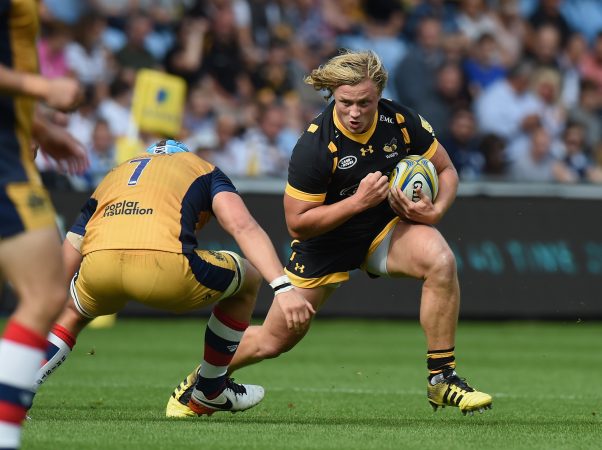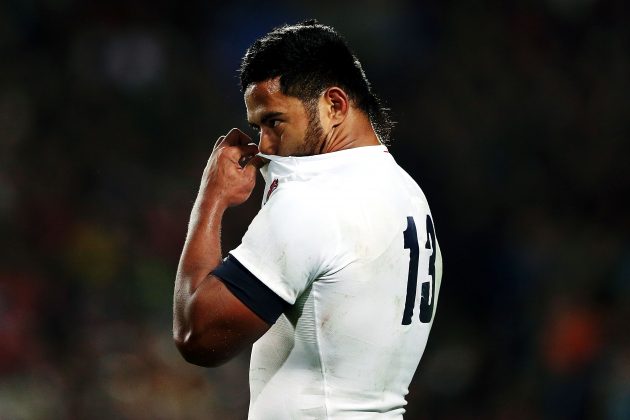England increasing tally of injuries shouldn't be feared but seen as an opportunity to increase squad depth towards the 2019 World Cup
By Alex Shaw
There are two words rugby fans and coaches the world over fear to hear – injury crisis.
It can loom like an ominous, dark cloud over any international teams’ preparations for a Test window.
If there is a year to suffer through one, though, there aren’t many better than 2016. The new cycle is still young and coaches are given longer leashes to experiment with and develop their squads.
Winning is still, as ever, paramount, but losses can be mitigated by encouraging performances and adaptations to a new style.
Injuries offer opportunities to other players to put forward their cases for selection and can create a larger pool of proven Test players two or three years down the road. With all due respect to the Six Nations and The Rugby Championship, both live in the shadow of the Rugby World Cup and that’s what all teams are building towards.

Coming through: Josh Van der Flier was been a breakout star from last year
An example of this would be Ireland earlier this year.
Injuries to key players such as Rob Kearney, Iain Henderson and Sean O’Brien opened the door for Tiernan O’Halloran, Ultan Dillane and Josh van der Flier. The first three were known quantities but now the latter three are also players with whom Ireland can build heading towards the 2019 RWC.
Similarly, Ireland’s opponents this summer, South Africa, have also made the most of injuries to key players and should reap the rewards in the near future.
With Handré Pollard missing the whole of this southern hemisphere season, Elton Jantjies was thrust into the spotlight. There have been growing pains and mistakes by Jantjies but he will be a better player for his experiences and gives the Springboks the options they need moving forward.

In from the shadows: No 8 Warren Whiteley has replaced Duane Vermeulen for the Boks
Likewise, Duane Vermeulen’s injury has fast-tracked Warren Whiteley’s development at Test level and the No 8 has taken that extra responsibility and pressure in his sizeable stride.
The perfect case study for this, however, may be the current England side.
After coasting through the 2015-16 season with barely a scratch, the injury bug has finally come to bite Eddie Jones’ men.
Back rowers James Haskell and Jack Clifford have been ruled out of the upcoming Test window, wing Jonny May is yet to play after suffering a knee injury last season and Manu Tuilagi has been felled by his troublesome groin.
There are also question marks over whether or not Dylan Hartley, Owen Farrell and Joe Marler will be in fighting shape by the time South Africa arrive in London next month.
With England playing so well last season and staying relatively healthy, opportunities were limited for players outside of Jones’ favoured group of 27 or 28.

England regular: Jonathan Joseph has been a regular fixture under Eddie Jones
Farrell, Mike Brown, Anthony Watson and Jonathan Joseph started all eight of England’s games under Jones – excluding the match against Wales which was held on the same weekend as the Premiership final – whilst Jack Nowell and George Ford both started seven and Ben Youngs started six.
There was a similar story in the pack as Hartley, Chris Robshaw, Billy Vunipola, George Kruis and Dan Cole started all eight games, Haskell started seven and Maro Itoje started six.
Trusted performers such as Clifford, Danny Care and Mako Vunipola featured in all eight games, whilst Paul Hill and Jamie George featured in seven.
With consistency being prized highly by Jones and the Australian eager to develop players as starters, he was reluctant to chop and change over the course of the season. In fact, the only positions where Jones looked to actively rotate his personnel or try new players as starters were loosehead prop, scrum-half and, briefly, inside-centre.

In form: Tommy Taylor has impressed at Wasps early in the season
These injuries now offer Jones the opportunity to be a bit more experimental with his squad and not only improve the depth of player available to England, but also identify players with the potential to prove long-term challengers to those currently possessing starters’ jerseys.
If Hartley does not recover from his head knock in time to take on the Springboks, George has been chomping at the bit to start, whilst Tommy Taylor has impressed enough following his arrival at Wasps to nudge ahead of Luke Cowan-Dickie in the pecking order.
The double blow of losing Haskell and Clifford opens up opportunities for the uncapped duo of Mike Williams and Sam Jones, who was himself injured earlier today. The England seven jersey will always be up for debate until fans are placated by a genuine fetcher and though neither player offers that specifically, they are versatile and physical contributors who can play key roles for England moving forward.
Perhaps the most interesting opportunity would be the one afforded if Farrell cannot regain fitness by the end of the month.
Jones’ experiment with Luther Burrell did not last long in the first test against Australia and Tuilagi is sidelined for the foreseeable future but both Ben Te’o and Henry Slade are candidates to fill the void. If one of them can nail down and impress in the 12 jersey this autumn, it will free Jones up to try moving Farrell back to fly-half, something he was keen to do Down Under.

Pole position: Leicester’s Mike Williams has a shot at getting the No 7 shirt
Stuart Lancaster was lauded for his adventurous selections in the early days of his tenure as England coach but arguably fell foul of settling for the good team he had built and not searching for players capable of making it a great team.
Admittedly, Lancaster had the pressure of trying to ensure England were competitive in a tough pool at a home Rugby World Cup and that may have stayed his bolder instincts but Jones – or any other international coach – needs to be careful they don’t fall into the same trap.
The point is, having injuries and squad disruption in 2016 is no bad thing.
Yes, you want consistent selections with players being able to develop chemistry together but it is far better for a Test side that the injury big strikes now and they are able to ascertain where they have strength in depth and where they need to improve. If it strikes in a RWC year and a coach has had the luxury of a largely full-strength team for the previous three years, it can set alarm bells ringing.
Whether a coach looks to find like-for-like replacements who can step in and replicate what a current starter provides or they opt to utilise a player who brings a different set of skills to the position, is the type of decision that can be the difference between a coach being seen as a success or a failure.

Pause for thought: Eddie Jones will be plotting the downfall of Autumn opponents
Both Joe Schmidt and Allister Coetzee have experimented with players of different styles where injury has allowed for them this year, whilst Jones’ new blood for the upcoming Test window seems to be very much in the like-for-like mould.
The success of the two approaches is not necessarily mutually exclusive and there is no right or wrong way of doing things. England are developing two or three players at every position who can play the way Jones wants England to, whilst Ireland and South Africa have improved their ability to turn their hand to different tactical approaches.
Regardless of which approach you favour, these short-term pains shouldn’t just be stomached, they should be embraced, as they can reap long-term gains.





